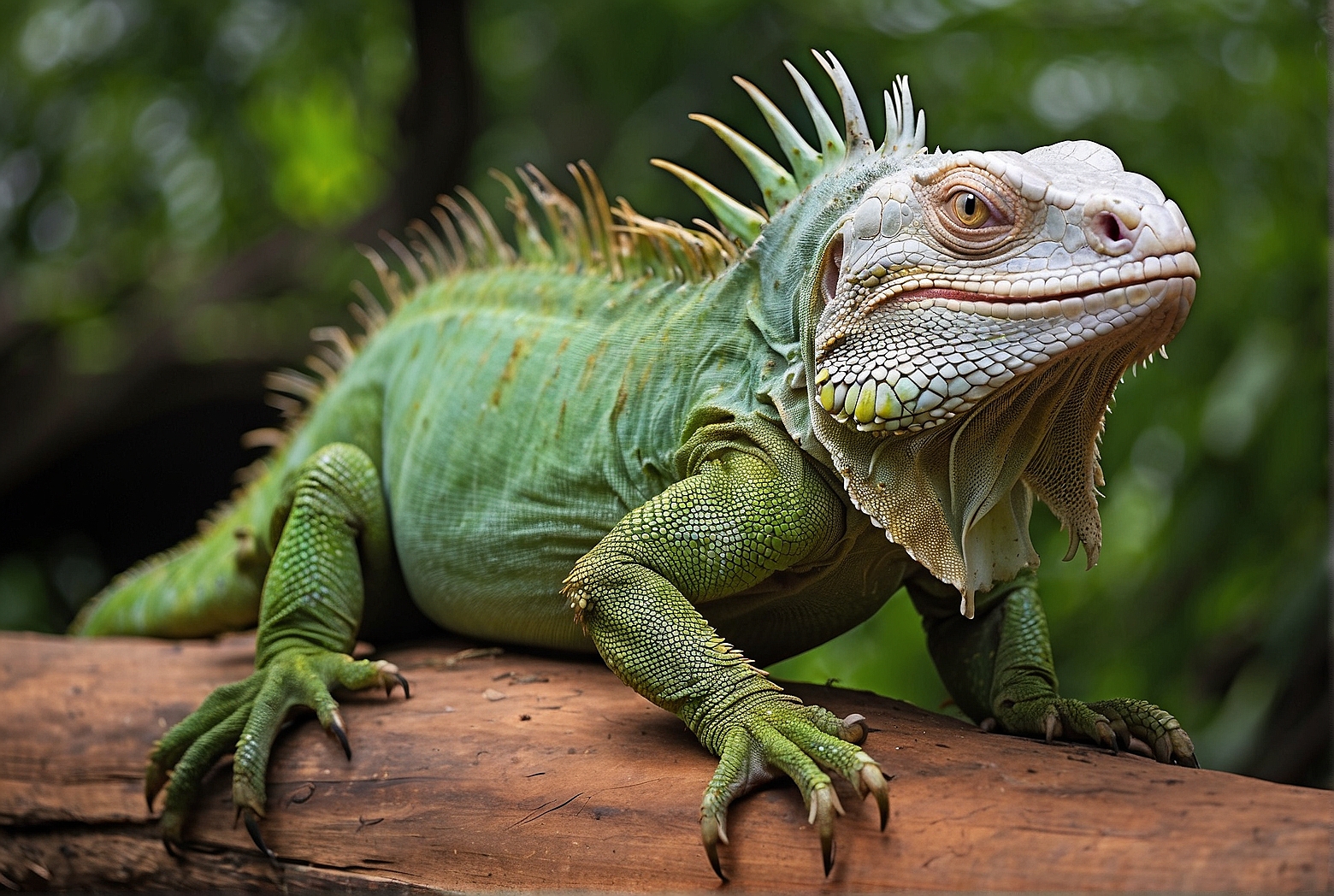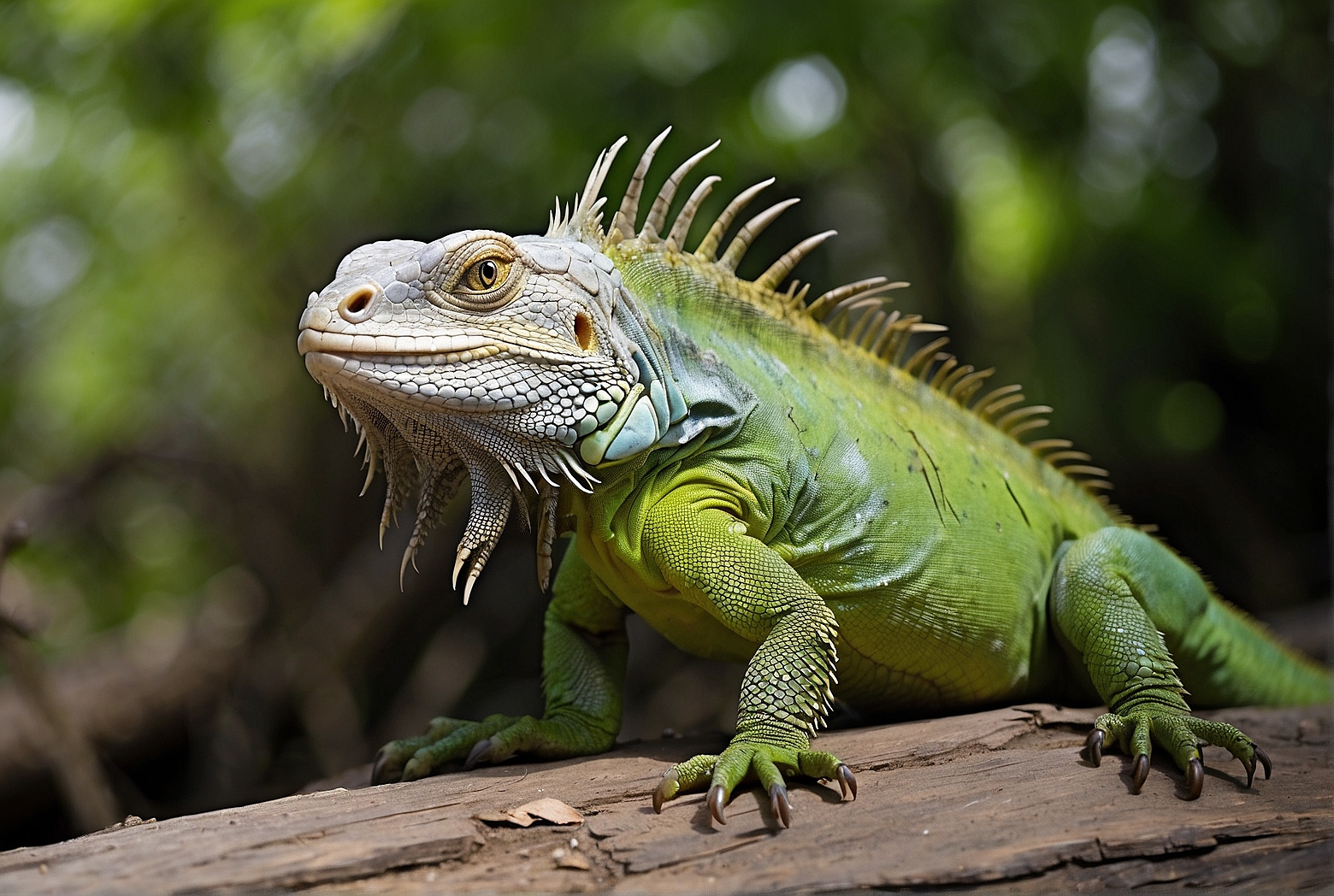Have you ever wondered what green iguanas eat when they’re out in the wild? In this article, we will take a closer look at the natural diet of green iguanas and explore what these fascinating creatures consume to fuel their daily lives. From leafy greens to fruits and flowers, you’ll be surprised to discover the diverse array of foods that green iguanas rely on to thrive in their natural habitats. So, let’s embark on an exciting journey into the world of these magnificent reptiles and uncover the secrets of their wild dining habits.
Habitat of Green Iguanas in the Wild
Green iguanas are native to tropical and subtropical regions around the world. They thrive in the lush environments of rainforests, swamps, and riversides. These habitats provide the perfect combination of warmth, moisture, and vegetation that green iguanas need to survive. With their excellent climbing abilities, green iguanas can be found perched on trees or basking on rocks, utilizing both their agility and the warmth from the sun to regulate their body temperature.
General Overview of Green Iguanas’ Diet
As herbivorous reptiles, green iguanas have a predominantly folivorous diet, meaning they mainly consume leaves. However, they also exhibit occasional frugivorous and omnivorous tendencies. While their primary source of nutrition comes from plant matter, green iguanas are known to supplement their diet with fruits and occasionally even insects to fulfill specific dietary needs.
Plant Matter Consumed by Green Iguanas
Green iguanas have a vast range of plant matter that they consume as part of their diet. Leaves of various trees and shrubs serve as a significant portion of their food intake. Additionally, they are opportunistic feeders and will readily consume flowers and fruits when they are available. Tender shoots and vines are also on the menu for these iguanas, offering them additional sources of nourishment.
Specific Plant Species in Green Iguanas’ Diet
While green iguanas have a diverse selection of plant matter to choose from, there are certain species that are particularly favored by them. Bamboo leaves, for example, are a common choice due to their abundance and nutritional value. Hibiscus flowers and mango fruits are also popular options that green iguanas enjoy. Jerusalem artichokes and Schefflera leaves are additional plant species that make up an essential part of their diet.
Impact of Nutrition on Green Iguanas’ Health
Proper nutrition plays a crucial role in the overall health and well-being of green iguanas. One key aspect is maintaining the appropriate ratio of calcium and phosphorus in their diet, as an imbalance can lead to metabolic bone disease. Additionally, green iguanas have specific vitamin requirements that need to be met to support their immune system and overall health. Moreover, dietary fiber is essential for their digestive system, aiding in digestion and preventing constipation.

Feeding Behavior of Green Iguanas
Green iguanas exhibit selective feeding behavior, carefully choosing specific plants and parts of plants based on their nutritional needs. They employ various foraging techniques to access desired food sources, such as climbing trees and using their powerful jaws and long tongues to pluck leaves or fruits. Interestingly, olfaction plays a significant role in their feeding behavior, as they rely on their sense of smell to locate food sources.
Availability and Seasonality of Food Sources
The availability of plants varies depending on the region and season. Green iguanas must adapt to changes in the abundance of their preferred food sources. Seasonal changes affect the availability of certain fruits and flowers, requiring green iguanas to diversify their diet during different times of the year. Furthermore, these reptiles have evolved adaptations to cope with periods of food scarcity, such as slowing down their metabolism and conserving energy.
Water Consumption in Green Iguanas
While green iguanas primarily obtain hydration from the moisture present in their diet, they will actively seek out water sources for drinking. Whether it be puddles, ponds, or droplets on leaves, they utilize behavioral aspects like licking surfaces to satisfy their water intake needs. Factors such as environmental temperatures and humidity levels can influence the amount of water green iguanas consume.
Human Interactions and the Diet of Green Iguanas
With the rapid destruction of their natural habitats, human interactions have had a significant impact on the diet of green iguanas. As their habitats diminish, they are left with fewer food sources, leading to a decrease in their overall nutritional intake. In captivity, green iguanas often receive supplemental diets to compensate for the lack of natural food options. However, it is crucial for these diets to closely resemble their natural diet to ensure their optimal health and well-being. Inappropriate feeding by humans, such as offering improper food items, can lead to various health issues and should be avoided.
Conclusion
In conclusion, green iguanas have adapted to thrive on a plant-based diet in their natural habitat. Their diet consists primarily of leaves, supplemented with flowers, fruits, and other plant matter when available. Maintaining proper nutrition is essential for their health, including the appropriate ratio of calcium and phosphorus, meeting vitamin requirements, and providing dietary fiber. Their feeding behavior, availability of food sources, and adaptations to cope with scarcity further emphasize the importance of understanding and replicating their natural diet in captivity. As stewards of their well-being, it is our responsibility to ensure that green iguanas receive a diet that closely resembles what they would consume in the wild, thus promoting their overall health and longevity.
